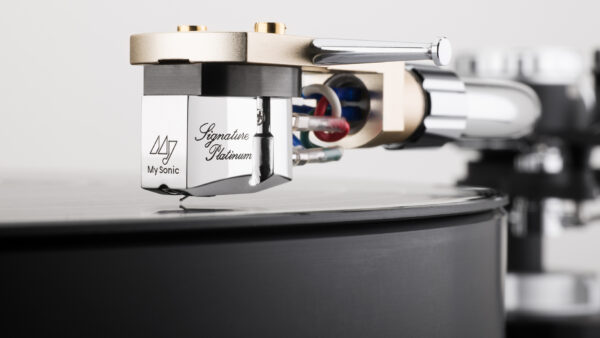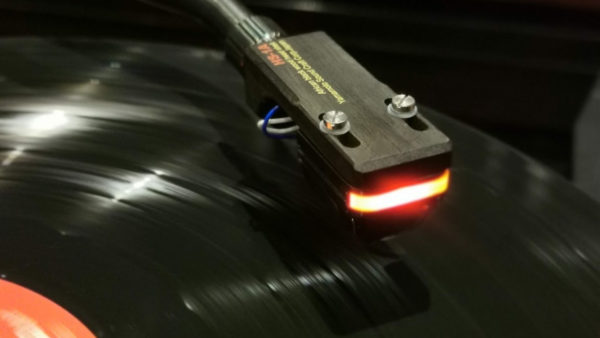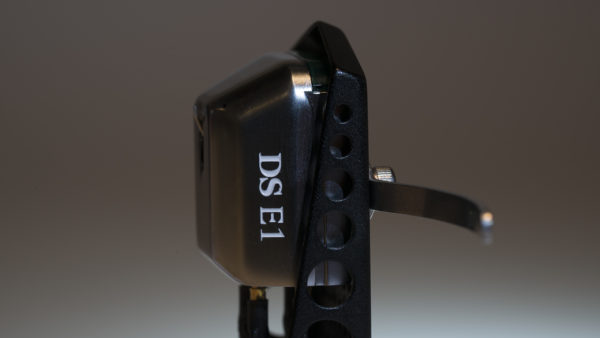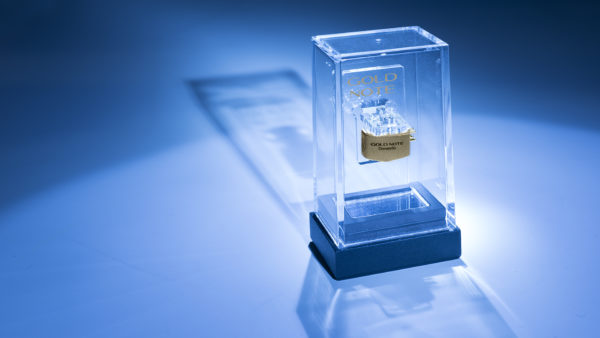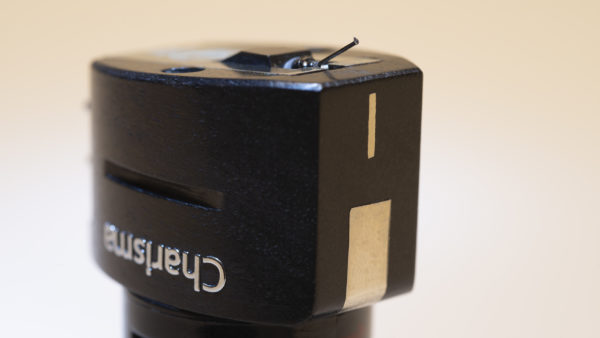AVID’s Conrad Mas is a problem solver. When he designs anything, it is built to take on the world, and his company is not one that creates a product, only to be followed up with a new, improved model two years later. You need to go no further than his Acutus Reference turntable. This table was a stunning, top of the range model when introduced over 15 years ago, and it stands the test of time today, still the core product in the lineup. This is what makes a confidence-inspiring product, and why you rarely see AVID turntables on the secondary market – people tend to keep them for life.
Though a phono cartridge tends to be more of a consumable item, AVID takes the same approach with their new line of phono cartridges, one Mas refers to as “good, better, best.” He leads with his best effort, doing all the heavy engineering lifting first, and finally figures out a cost-effective way to produce a range of products from there. The Reference Ruby you see here follows the same tradition. At $6,995, this will be their top cartridge, with two more models to follow. As AVID mentions on their website, this cartridge is “not inexpensive, but nowhere near inaccessible.” In the same way that their Acutus Reference extracts more musical information from the record groove than several other turntables costing considerably more, the Reference Ruby carries on the AVID tradition.
Mega performance, without the mega price
This is a cartridge that easily stands up to the mega transducers I’ve used from Lyra and Clearaudio – again at half the price. Phono cartridges are a different beast than a turntable though, and much like speakers, they all have an individual personality. Taking the Lyra Atlas and Clearaudio Goldfinger, owned in the past, the Goldfinger offers a robust, tonally saturated, and dynamic presentation, where the Atlas is more of a “just the facts, sir” cartridge. I must confess my favorite cartridge of all is the impossible to get Lyra Olympos, considered somewhat embellishing in it’s presentation, but one of the more romantic sounding cartridges made.
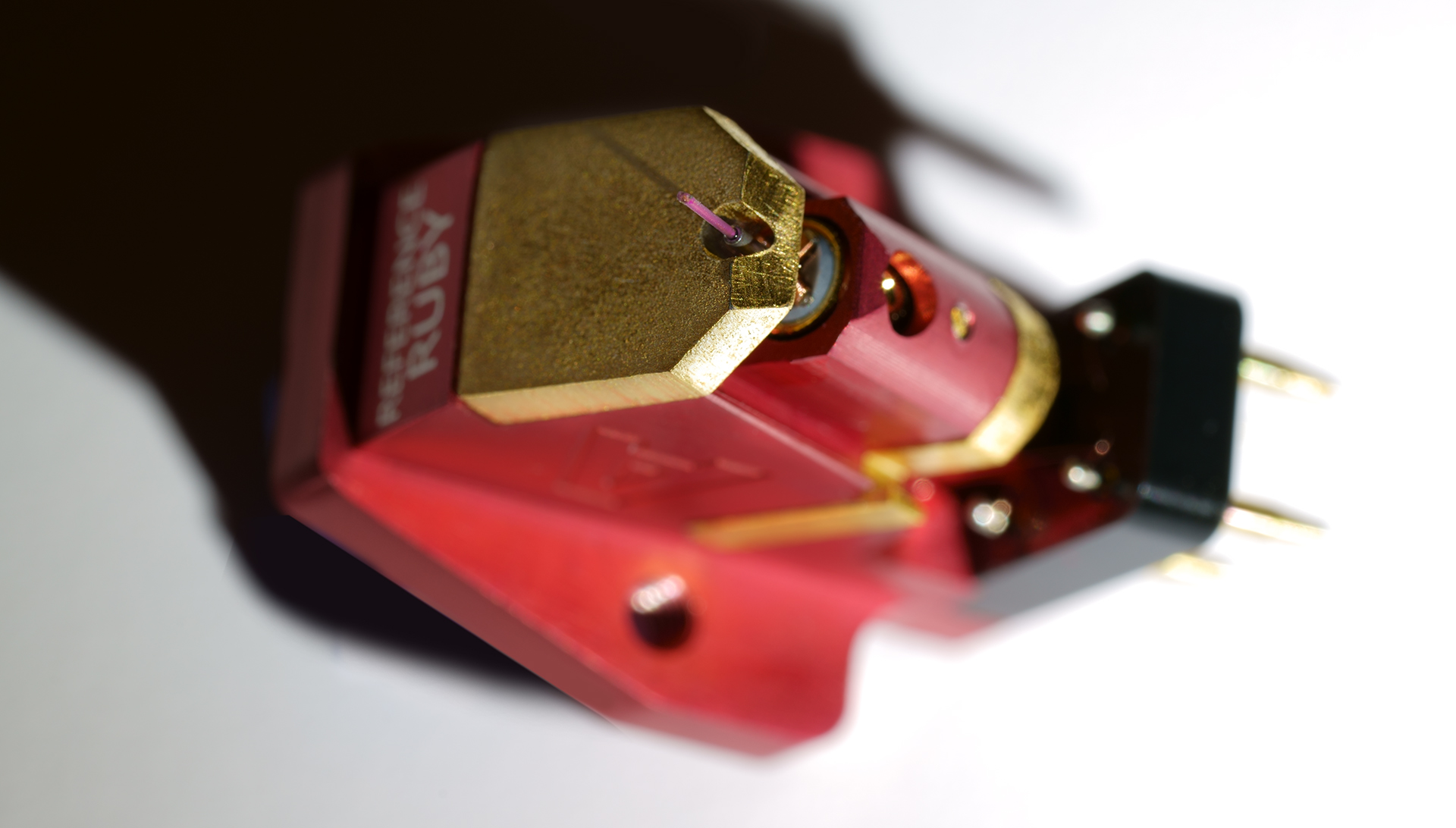 Bias aside, the Reference Ruby offers a stunning combination of sound and functionality, coming as close to a do-all cartridge that I’ve yet heard. Cartridges are so much like automobiles that no one car fulfills all your needs, forcing you to focus on what will make your happiest day today. This is where the Reference Ruby shines – it’s like a BMW M5. You can drive it everywhere without bother, yet it has almost as much performance as the Porsche GT3 or the Aston Martin in your garage that you rarely drive because it’s too much work with the kids and the dog. Yet when you get out on the open road, it’s still tons of fun to drive.
Bias aside, the Reference Ruby offers a stunning combination of sound and functionality, coming as close to a do-all cartridge that I’ve yet heard. Cartridges are so much like automobiles that no one car fulfills all your needs, forcing you to focus on what will make your happiest day today. This is where the Reference Ruby shines – it’s like a BMW M5. You can drive it everywhere without bother, yet it has almost as much performance as the Porsche GT3 or the Aston Martin in your garage that you rarely drive because it’s too much work with the kids and the dog. Yet when you get out on the open road, it’s still tons of fun to drive.
From the second the stylus is lowered onto a fresh MoFi copy of the self-titled Dire Straits album, it’s clear that this cartridge is extraordinary. It’s almost as if Mas made this cartridge just for me. I’ve always liked the Dynavector 17D3 ruby karat, and it’s new updated sibling. Neither of these cartridges has the ultimate resolution or lack of graininess that the AVID cartridge offers. Though lesser transducers, the Dynavector ruby has always been a master of sheer transient speed. If you’re a lover of ESL speakers, you know that walk through transparent, non-veiled picture they present, that only they can do. This is here in abundance with the Reference Ruby.
AVID mentions on their website how much they have studied to eliminate cartridge body vibration. Combining this with the solidity of a ruby cantilever is brilliant. Listening to this cartridge for extended periods leaves no fatigue whatsoever – it is neither extended to the point of being bright, yet at the same time, does not round off the edges of musical notes nor does it over embellish as a Koetsu does to capture your attention. The overall tonal balance is natural and correct, with the slightest (and I mean ever so slightest) hint of warmth and saturation, to not sound edgy. If this cartridge were a guitar, it would be 65% Stratocaster (with the cleanliness of tone) and 35% Les Paul Custom (that lovely saturated tone and sustain). That’s the best I can do, but if you are looking for a very natural rendition of your music – and I’m guessing the broader range of music you do listen to, the more important this will be, this cartridge is fantastic.

It’s all about nuance
While the midrange offered by the Reference Ruby is natural, both ends of the frequency spectrum are reproduced with a high degree of texture, detail, and punch. The Reference Ruby has some of the best bass definition I’ve experienced, and with a set of six REL no.25s, that aspect of my reference system is dialed in to perfection, making it much easier to hear this kind of thing. Regardless of program material, whether your favorite hip hop tracks, jazz, or anything in between, the Reference Ruby is one of those unique components that will have you quickly going through your favorite 100 records to experience the delta this cartridge brings to the table.
Finally, the Reference Ruby combines tonal accuracy, extension, and tonal prowess to create a massive three-dimensional soundfield. This is what the big dollar cartridges bring to the listening experience that the great cartridges in the $1,500 – $3,000 range do not. Cartridges in this range are usually compromised in at least one significant aspect of musical reproduction – no shame in that, you just can’t have it all for $3k. The Reference Ruby checks all the boxes and does it for way less than the world’s most expensive models – something AVID has been pulling off handily with their turntables for almost two decades now. Familiar musical selections are bigger, deeper, and just more inclusive when played with the Reference Ruby. If your favorite records offer up a lot of spatial information, you are going to be very excited by this cartridge.
Easy integration
If you’ve ever attended one of AVID’s turntable demos, they are fond of taking a decidedly mid-range cartridge and fitting it to the bottom of their turntable range, a mid-range model and their flagship. Good, better, best. This clearly illustrates how much difference the turntable/tonearm as a stable platform to extract groove information has on overall playback. And I agree with Mas entirely on this approach, having tried budget cartridges on both budget and top-range tables, comparing to the difference between the sonics of putting a top cartridge on a top table and budget table. I’ll take a Shure M97 on an Acutus Reference over a Goldfinger on the Ingenium any day – and I’ve made the comparison.
That being said, after test driving the Reference Ruby on several different tables from Rega, Luxman, Technics, and AVID (the P10, PD-171, SL-12GAE, and the Volvere SP) in the $5,000 – $10,000 range, it’s an impressive performer. I maintain that a turntable/tonearm/cartridge is indeed a system. If you overexert yourself in one area, you may be indeed throwing some of the precious resolution you paid for away. It will be exciting to see how much of the performance available with the next two cartridges in the Reference lineup will be available.
 Final listening was done on the Grand Prix Parabolica/TriPlanar combination, and all setups were auditioned via the Pass XS phono for critical listening and ultimate evaluation. Modest experimentation proved the factory suggestions of 100-ohm loading and 1.9 grams of tracking force to be the perfect combination. Again, reinforcing the top-range ability of the Reference Ruby, this cartridge has more than enough performance (in every aspect) to quickly assess the differences between my reference Pass XS Phono the new XP-27, and the VAC Rennaissance MK V in for review.
Final listening was done on the Grand Prix Parabolica/TriPlanar combination, and all setups were auditioned via the Pass XS phono for critical listening and ultimate evaluation. Modest experimentation proved the factory suggestions of 100-ohm loading and 1.9 grams of tracking force to be the perfect combination. Again, reinforcing the top-range ability of the Reference Ruby, this cartridge has more than enough performance (in every aspect) to quickly assess the differences between my reference Pass XS Phono the new XP-27, and the VAC Rennaissance MK V in for review.
Those wanting just a touch of warmth in their presentation can always spice it up a bit with a tube phono section. Listening sessions with the Luxman EQ-500 and the VAC Renaissance MK V are equally outstanding, albeit slightly different. Using such a neutral cartridge like this with a tube phonostage feels a lot like pairing a tube linestage with a big solid-state amplifier. Significant bass authority and dynamics, with a slight touch of warmth. We all enjoy something different, to be sure, but when you start the game with a transducer this natural and this resolving, you can always fine-tune the rest of the system to your taste.
Award-worthy
Comparing the Reference Ruby to some of the big guns with five-figure price tags, are they better? Overall, no. Are they different? Yes indeed. Do they reveal more music – overall? Not in the context of my system and record collection, with multiple turntable setups, individually optimized for different musical situations. However, if I had to live with one and only one cartridge for the rest of my days spinning vinyl – this would be the one I’d pick. (Seriously, I am hoping Santa has one of these under the Christmas tree for me – Pam are you listening?)
The AVID Reference Ruby is one of the finest, most balanced phono cartridges I’ve had the pleasure to review – at any price. Put in the context of the much more expensive cartridges it competes with, it is more than worthy of one of our Exceptional Value Awards for 2020.
The AVID Reference Ruby Cartridge
$6,995
Peripherals
Turntables Technics SL-1200GAE, Rega P10, Luxman PD-717, AVID Volvere SP, Grand Prix Audio Parabolica
Phono stages Pass XS Phono, Pass XP-27, Luxman EQ-500, VAC Renaissance MK V
Amplifiers Pass XA 200.8 monoblocks
Speakers Sonus Faber Stradivari 35th Anniversary
Subwoofers (six pack) REL no. 25s
Cable Cardas Clear, Tellurium Q Reference

